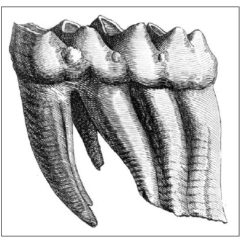The Permian extinction lies in the twilight of deep time: not so remote we cannot fathom what was going on, not close enough to get a clear view. Getting a reasonable idea of what went on during the K/T event was no easy exercise, despite the (now) obvious clues such as a giant crater buried in the north Atlantic or an iridium peak at the K/T boundary. The Permian extinction, that happened almost 200 million years earlier and had no obvious silver bullet, is a much harder headache. The narrative I bought and published in my book was that of a relatively sudden global warming triggered by massive volcanism such as the Siberian Traps, but there are devilish details. Now Zhicai Zhu et al. report on Scientific Reports evidence of an abrupt change of regime from meandering to braided rivers and aeolian deposits in China. Such rapid changes in hydrology are also documented from other sites such as the Karoo Basin in Africa or Russia, but their interpretation was (and is) unclear. According to Zhu et al.:
The synchronous dramatic negative excursion in δ13C and δ18O in the uppermost Sunjiagou Formation provide reliable evidence for reduced weathering, coolness, aridification, and anoxia.
The keyword here is coolness. What coolness? Isn’t the end-Permian extinction event a period of catastrophic warming? A possible scenario is laid on:
Our study indicates a relatively cool temperature across the PTB, which was supported by some previous studies74,75,76,77 though it is different from most views that indicate a rapid increase in palaeotemperature across the PTB. However, in models for the outcomes of a massive volcanic eruption, such as that of the Siberian Traps, release of massive volumes sulphur dioxide when mixed with atmospheric water may produce a transient cooling phase before the warming, driven by CO2, methane and water vapour. Such cooling can be localised around the volcanic source, or can spread worldwide and last for 1–2 years78. Whether the conflicting findings of either global warming or cooling following the PTB eruptions can be explained by these differing consequences of the eruption, perhaps acting in sequence, or whether these differing temperature changes reflect latitudinal or regional regional effects cannot at this stage be determined.
It makes sense. A sudden warming might be catastrophic, but imagine a sudden cooling followed by sudden warming. That would really kick a biosphere off: the few that were cold-adapted enough to survive a bout of icy temperatures find then themselves at the mercy of a spike of heat. No wonder only very few beings would survive such climatic swings. We still have no idea if this is true or not, but we must be wary of using the past extinctions are strict proxies for our present crisis. Every extinction event teaches us lessons, but is also unique, no less than the species they wipe off the Earth.
The paper is: Zhu, Z., Liu, Y., Kuang, H. et al. Altered fluvial patterns in North China indicate rapid climate change linked to the Permian-Triassic mass extinction. Sci Rep 9, 16818 (2019) doi:10.1038/s41598-019-53321-z
